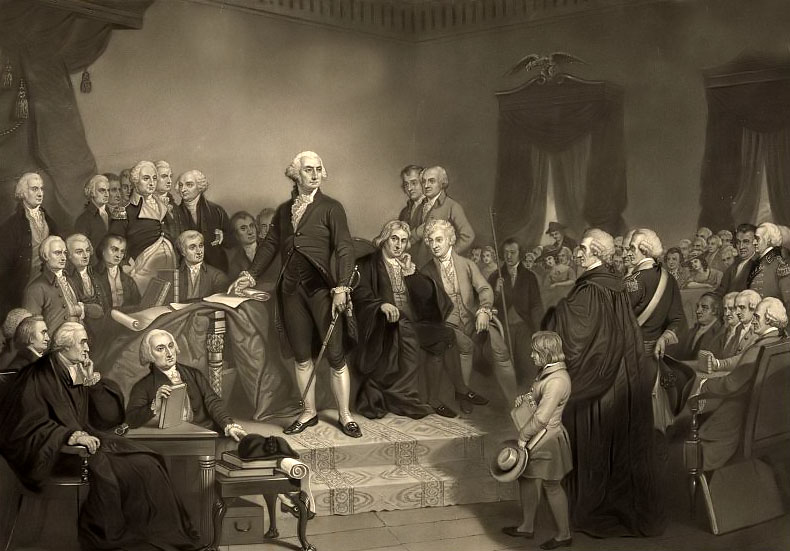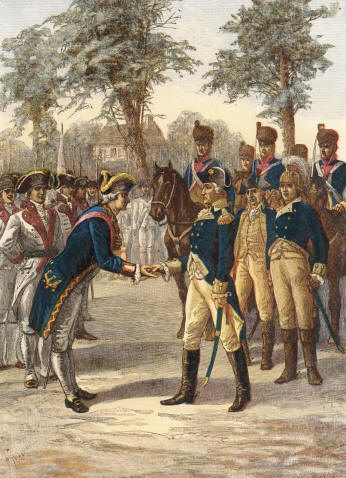Stripping Us of Our Rights:
DHS, Naked Body Scanners, and the Fourth Amendment
Naked body scanners and invasive “enhanced pat-downs” at airport checkpoints have caused a public uproar for invading travelers’ privacy. Now, the Department of Homeland Security (DHS) is deploying roving Z Backscatter Vans (ZBVs) equipped with mobile backscatter x-ray scanners to sneak a peek under pedestrians’ and motorists’ clothing. Such searches could violate a person’s rights under the Fourth Amendment to the Constitution.
ZBVs’ primary purpose is to image vehicles and their contents. DHS describes the scanners as “a walk through x-ray screening system” that allow for “covert inspection of moving subjects.” The technologies they use, backscatter imaging technology and active millimeter wave systems, cannot only peer into cars to reveal hidden objects, but can also see under clothes and into buildings.
Marc Rotenberg, the president of the Electronic Privacy Information Center (EPIC), has called ZBVs “one of the most intrusive technologies conceivable.” These “mobile strip search devices” allow the government to search under one’s clothing without one’s consent - or even knowledge. In this case, the technology used is the digital equivalent of a full-blown search. These searches may violate the Fourth Amendment, which limits police conduct by forbidding unreasonable searches. The Fourth Amendment’s purpose is to safeguard the privacy of individuals against arbitrary invasions by government officials. The Fourth Amendment guarantees the following:
The right of the people to be secure in their persons, houses, papers, and effects, against unreasonable searches and seizures, shall not be violated, and no Warrants shall issue, but upon probable cause, supported by Oath or affirmation, and particularly describing the place to be searched, and the persons or things to be seized.
The Fourth Amendment requires police to obtain a warrant before conducting a search. Without prior judicial approval, a search is per se unreasonable unless the failure to comply with judicial process is excused by exigent circumstances.
An intrusion upon constitutionally guaranteed rights must be based on more than the good faith of the officer or an inarticulate hunch. A police officer must be able to point to specific and articulable facts that reasonably warrant an intrusion on a person’s rights. The facts must be judged against an objective standard: would the facts available to the officer at the time of the search lead a reasonably prudent person to believe that the search was appropriate? If not, then the search is illegal.
The scope of a search must be strictly tied to and justified by the circumstances that made it permissible. If there are exigent circumstances, the search must be strictly circumscribed by the exigencies that justify the search. If a police officer has a reason to believe that he is dealing with an armed and dangerous individual, he may search for weapons, but the search must be limited to that which is necessary to discover weapons. The Supreme Court has found that an officer may conduct a carefully limited search of a person’s outer clothing to search for weapons in cases where the officer observes unusual conduct that led him to reasonably conclude that criminal activity was afoot and that the person may be armed and dangerous. However, the Court also said the officer first had to identify himself as a policeman before conducting the search.
In the case of ZBVs, advanced technology enables police to secretly view private activities. Such activities are not stripped of Fourth Amendment protection. Obtaining information from a constitutionally protected area, such as the interior of a house, using sense-enhancing technology constitutes a search entitled to Fourth Amendment protection - at least where the technology is not in general public use, as is the case with ZBVs. If the police do not have a warrant and there are no exigent circumstances making the search reasonable, such as suspicious behavior, the police are engaging in an unlawful search.
The courts are ultimately responsible for guarding against lawless police conduct by excluding the fruits of illegal searches from evidence at criminal trials. This exclusionary rule is not only meant to deter illicit police conduct, but also serves to ensure judicial integrity. Courts are not to be made a party to illegal invasions of Constitutional rights by permitting government to benefit from such invasions.
References
Mike Adams, “TSA, DHS plan massive rollout of mobile surveillance vans with long-distance X-ray capability, eye movement tracking and more,” March 06, 2011, available at http://www.naturalnews.com/031603_surveillance_police_state.html
Andy Greenberg, “Documents Reveal TSA Research Proposal To Body-Scan Pedestrians, Train Passengers,” Forbes, March 2 2011, available at http://blogs.forbes.com/andygreenberg/2011/03/02/docs-reveal-tsa-plan-to-body-scan-pedestrians-train-passengers
Andy Greenberg, “Full-Body Scan Technology Deployed In Street-Roving Vans,” Forbes, August 24, 2010, available at http://blogs.forbes.com/andygreenberg/2010/08/24/full-body-scan-technology-deployed-in-street-roving-vans
Katz v. U.S., 389 U.S. 347 (1967)
Kyllo v. U.S., 533 U.S. 27 (2001)
Samantha Murphy, “TSA aimed to put body scanners in public places,” The Christian Science Monitor, March 4, 2011, available at http://www.csmonitor.com/Business/2011/0304/TSA-aimed-to-put-body-scanners-in-public-places
Samantha Murphy, “Lawsuit Filed Over Airport Scanner Privacy, Health Concerns,” TechNewsDaily, August 6, 2010, available at http://www.technewsdaily.com/lawsuit-filed-over-airport-scanner-privacy-health-concerns-0993
Terry v. Ohio, 392 U.S. 188 S.Ct. 1868 (1968)
____________________
Attorney at Law
Website: cynthiahodges.com
Juris Doctor: South Texas College of Law (Houston, TX)
LLM (Environmental Law): Lewis and Clark Law School (Portland, OR)
Masters of Arts (Germanic Studies): The University of Texas at Austin
Law License: Washington State
James P. Hodges, Ph.D.
Website: Leadership by George!
Winner of the Freedoms Foundation at Valley Forge Medal of Honor
Member: National Speakers Association, American Society for Training and Development 


